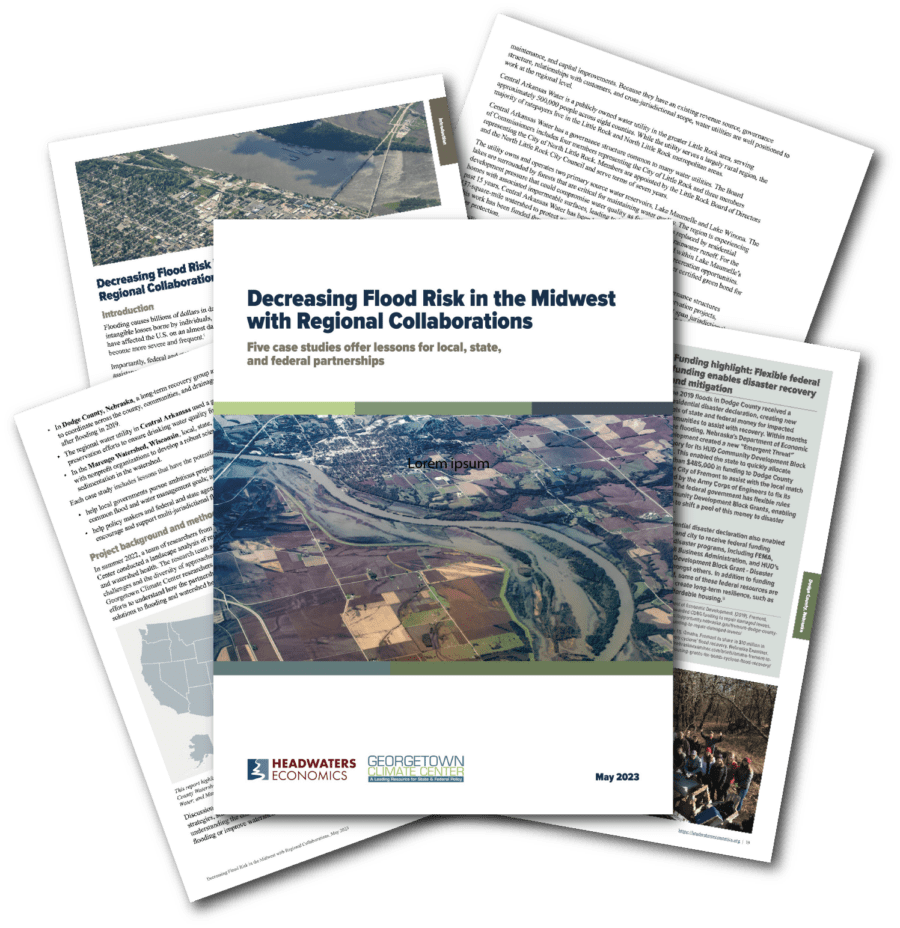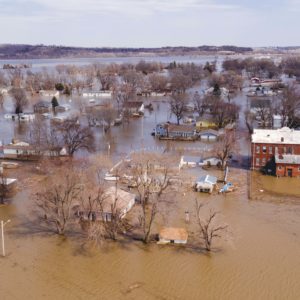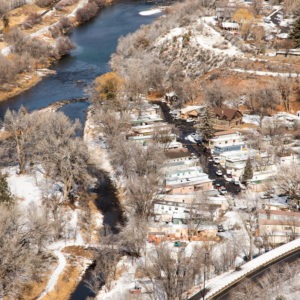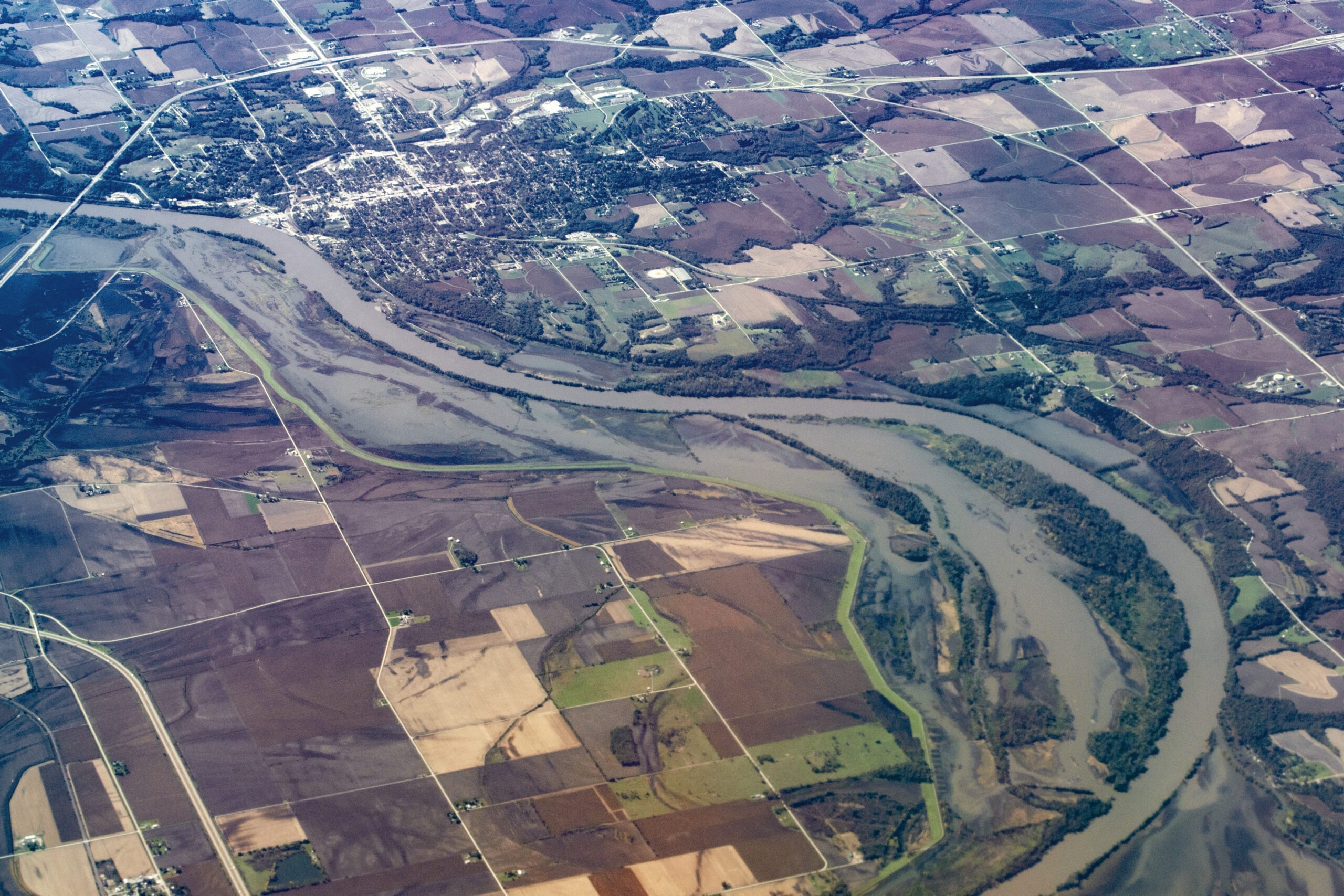
Decreasing flood risk in the Midwest with regional collaborations
A regional approach to flood risk can help communities pool resources and implement effective solutions. Five case studies offer lessons.
A flood occurs nearly every day in the United States, resulting in billions of dollars in damages every year. With flood risks, damages, and insurance rates only predicted to grow, many communities are seeking solutions.
Today, an unprecedented amount of federal funding is available to fund the most cost-effective solutions: mitigation and resilience projects. The 2021 Infrastructure Investment and Jobs Act included $35 billion in funding for flood resilience in communities, and the 2022 Inflation Reduction Act had billions of dollars more for resilience projects.
However, not every community will be able to access these resources. A significant portion of federal resilience funding is distributed via competitive grants, which can be nearly impossible for rural or disadvantaged communities to secure. Many communities also lack the expertise or budget to even begin planning for flood mitigation projects.
In the face of limited resources, some rural, flood-prone communities in interior states are beating the odds. They are acting to implement effective mitigation projects that cross community and county boundaries. Their stories can help other communities overcome barriers to realize flood risk-reduction goals.
To help communities advance solutions, Headwaters Economics and Georgetown Climate Center partnered to showcase several successful regional collaborations in the Midwest and highlight lessons that could be applied by those facing increasing flood risks. The results are detailed in a report, Decreasing Flood Risk in the Midwest with Regional Collaborations.
Subscribe to our newsletter!
The case studies highlight the need for communities to work together regionally to pool resources, fill gaps in staffing or expertise, and develop holistic, watershed-scale solutions. Regional solutions can look different from place to place, but the strategies identified in the report are united by common goals: to protect lives, property, infrastructure, and community well-being.
The report highlights five innovative regional projects that united rural and urban stakeholders:
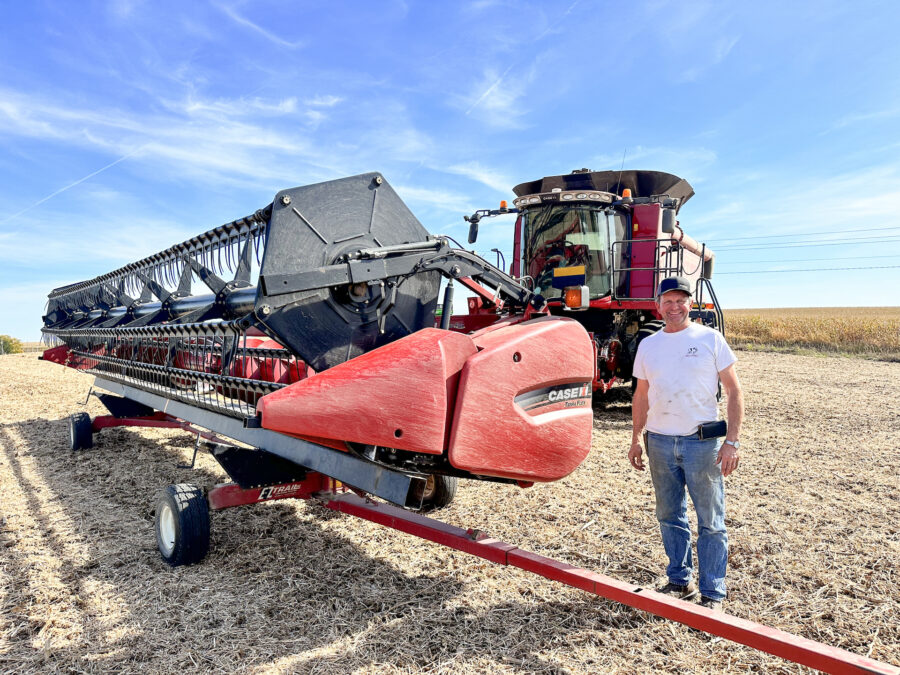
Dubuque County Watersheds, Iowa
Building relationships with farmers for watershed management
After years of flood disasters, local and county staff in Dubuque County partnered with farmers and landowners to implement conservation practices that reduce flood risk while also promoting soil health and water quality.
Lesson learned:
Water quality and flood risk-reduction goals can be achieved together.
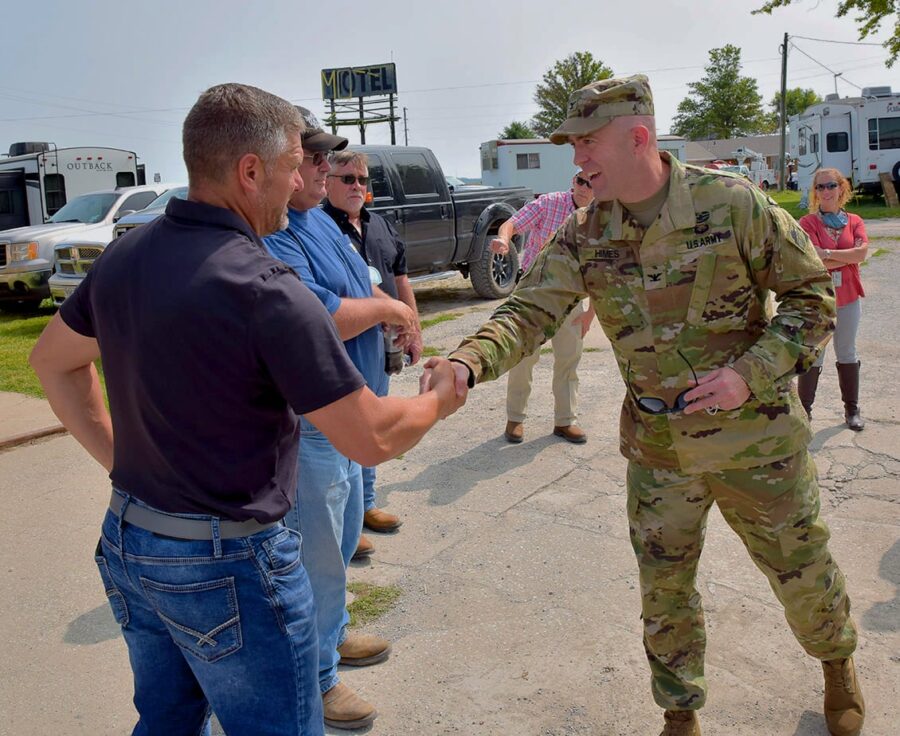
Atchison County, Missouri
Realizing a levee district’s vision for long-term solutions to flooding
Facing repetitive flooding that damaged roads, railways and farms, a levee district in Atchison County partnered with federal and state agencies and The Nature Conservancy to construct a levee setback. The project provides more space for the natural floodplain and reduces the risk of future breaches.
Lesson learned:
A third-party convener can be useful for keeping complicated projects on track.

Dodge County, Nebraska
Formalizing collaboration for flood recovery and risk reduction
Reacting to a major 2019 flood, Dodge County leaders and community partners formed regional networks to coordinate recovery and mitigation efforts. They are using disaster response funding and applying for additional grants to address the root causes of their flood risk.
Lesson learned:
Formal partnerships can amplify voices, and add expertise, capacity, and funding.

Central Arkansas water
Leveraging a utility’s leadership to finance watershed protection
In response to development pressure that threatened drinking water quality for Little Rock and surrounding counties, Central Arkansas Water undertook a large-scale conservation effort to protect water quality and reduce flood risks. In November 2020, it issued a green bond to finance forest acquisition and watershed protection—the first of its kind in the United States.
Lesson learned:
Utilities can be useful platforms for organizing regional flood risk and water quality projects.
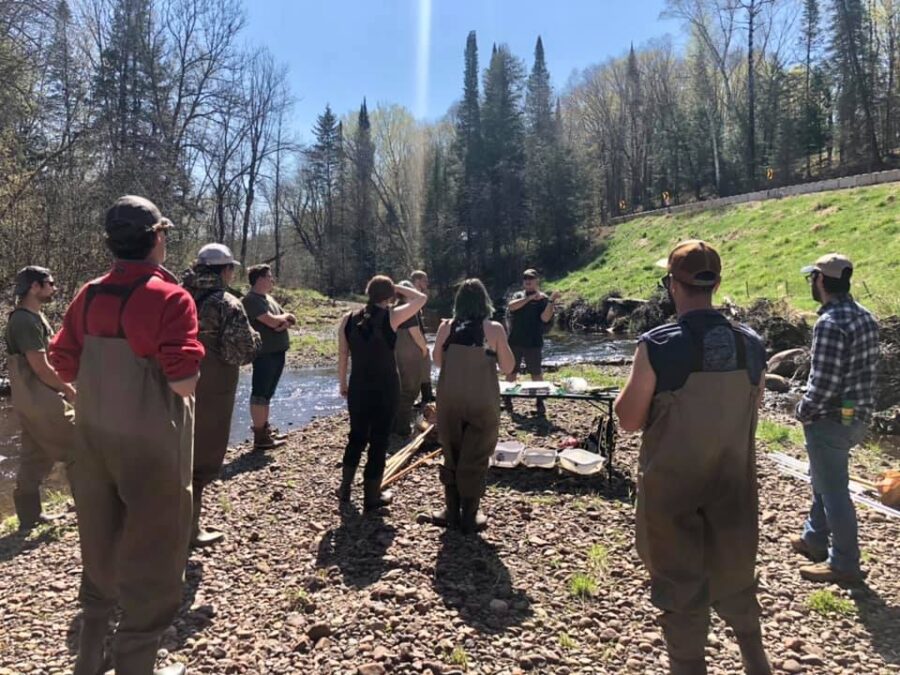
Marengo River Watershed Partnership, Wisconsin
Restoring regional wetlands to reduce flood risk and improve water quality
In Wisconsin, land use changes have impaired the Marengo River watershed’s vast wetlands, resulting in habitat fragmentation and deteriorated water quality. A regional partnership was formed to create a watershed action plan, establish a land conservation incentive program, and invest in projects to restore regional wetlands.
Lesson learned:
Establishing small goals at the beginning of collaborations can create early successes and build momentum.
Recommendations for regional flood collaborations
The report highlights the diverse and creative ways that local governments can work together to decrease flood risk at regional and watershed scales. While each collaboration is unique, many of the community partners interviewed experienced common challenges and barriers.
The report offers the following recommendations to better develop and support regional flood mitigation and watershed management efforts.
Recommendations for local government:
- Build a diverse coalition to help harness multiple sources of funding, authority, and technical expertise.
- Invest time and effort in regional coordination. Consider appointing a third-party convener, and starting small to build momentum.
- Partner with existing regional organizations or formalize new partnerships through intergovernmental agreements.
- Develop communication strategies that will resonate with community members.
- Consider local funding and financing strategies to enable project expansion and operations.
Recommendations for state and federal agencies:
- Empower regional authorities to undertake flood mitigation and watershed protection.
- Design mitigation funding programs that foster regional collaborations.
- Increase investments in planning and projects that reduce risk before a disaster occurs.
- Federal cross-agency collaborations should support regional flood mitigation projects.
Acknowledgments
This report was a collaborative research effort by Headwaters Economics and the Adaptation Program at Georgetown Climate Center, and co-authored by Kristen Smith, Annie Bennett, Diana Schoder and Damian Shapes Padilla. We would like to thank Georgetown Law students Jesse Valente and Abigail Johnson for their assistance in background research, and Mark Rupp, Caren Fitzgerald, Pete Rafle, and Kate Zyla at Georgetown Climate Center for editorial and strategic support. We would also like to thank all the community partners who participated in interviews and provided data for this research. They are individually acknowledged in each of the case studies within this report.
